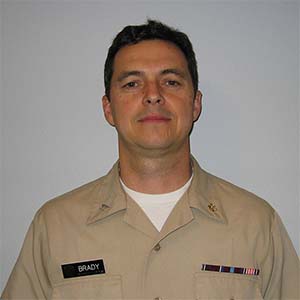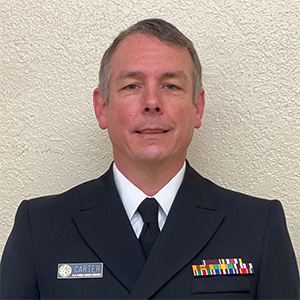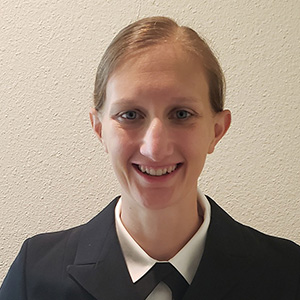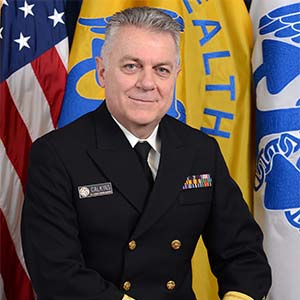Providing essential sanitation facilities to homes and communities in Indian Country, including safe drinking water and adequate sewerage systems, is critical to our efforts to raise the health of American Indians and Alaska Natives to the highest level. The Division of Sanitation Facilities Construction, part of the Office of Environmental Health and Engineering, administers a nationwide program responsible for delivering environmental engineering services and sanitation facilities to American Indians and Alaska Natives. This responsibility includes providing technical and financial assistance to American Indian tribes and Alaska Native villages for cooperative development and construction of safe water, wastewater, and solid waste systems and related support facilities.
DSFC recently recognized three outstanding employees who were recipients of annual awards for going above and beyond to serve American Indian and Alaska Native communities.
2021 Division of Sanitation Facilities Construction Leadership Award – Capt. Chris Brady, PE, Director, IHS California Area Division of Sanitation Facilities Construction

Capt. Chris Brady
This award highlights individuals who positively influence outcomes by providing vision through building and maintaining coalitions that work collaboratively to achieve programmatic goals. The California Area DSFC is committed to providing drinking water supply and sanitation facilities for over 100 American Indian tribes. Capt. Chris Brady exemplifies leadership by identifying, planning, and working with partners in finding solutions to complex issues. With the many environmental challenges the California Area has seen in recent years, Capt. Brady’s leadership has proved invaluable through coordination with federal and state agencies to address drought and power outages that affect tribal utilities. His coordination with the United States Environmental Protection Agency led to funding for $7 million and the California State Water Resources Control Board to secure $280,000 in matching funds to support project selections. Capt. Brady also coordinated with the EPA and the California Governor's Office of Emergency Services on a commercial power company’s expanded Public Safety Power Shutoff Program while securing $970,000 in emergency funding to install backup power systems for tribal utility systems. Through these efforts, Capt. Brady has exemplified leadership in support of maintaining the operation of tribal utilities, directly impacting homeowners who rely on tribal utility services.
2021 Division of Sanitation Facilities Construction Senior Engineer of the Year – Cmdr. James Carter, PE, District Engineer, IHS Phoenix Area

Cmdr. James Carter
Cmdr. James Carter is being recognized as the DSFC Senior Engineer of the Year for his outstanding dedication as a district engineer in the Phoenix Area. Cmdr. Carter oversees the Eastern Arizona District Office, including three field offices that actively manage 73 construction projects. He is involved in all phases of EADO's projects, including the review of preliminary engineering reports, hydraulic water models, and construction plans and specifications. The District completed six projects in the past 12 months, estimated at $10.5 million in project expenditures. Under Cmdr. Carter’s leadership, EADO has become the leading Phoenix Area District in obtaining and utilizing geographic information system maps as a basis for planning and preliminary design. Under his guidance, the large and complex White Mountain Apache tribal system and many San Carlos Apache tribal water systems are mapped and uploaded onto the IHS' GIS server. As these systems age and the communities grow, these early steps in mapping the utility systems and creating hydraulic water models give engineering staff the ability to complete the necessary planning and design for troubleshooting the systems quickly. Cmdr. Carter’s vision for incorporating GIS into the program has provided transparency during formal tribal meetings, leading to funding of strategic sanitation projects.
2021 Division of Sanitation Facilities Construction Junior Engineer of the Year – Lt. Michelle Roy, PE, Field Engineer, IHS California Area

Lt. Michelle Roy
Lt. Michelle Roy is being recognized as the DSFC Junior Engineer of the Year for her outstanding contributions as a field engineer in the California Area. As the lead engineer for the Tule River Indian Reservation, she has overseen the completion of construction projects that incorporated a hybrid of conventional gravity and low-pressure sewer collection lines to overcome multiple constraints from subsurface rock and cultural properties, providing sewer treatment to 51 homes with failing drain fields. Lt. Roy participated in a $1.7 million EPA-funded project by analyzing water quality parameters and developing an engineering solution to reduce turbidity at the surface water treatment plant during the rainy season by designing a new one million-gallon water storage tank. The project has improved water supply and storage to 288 homes. Lt. Roy constantly shows high-level leadership and manages an exceptionally large project portfolio with a budget totaling over $23 million. She has played a vital role in providing sanitation facilities construction projects serving over 2,100 homes.
Related Content:
Division of Sanitation Facilities Construction



